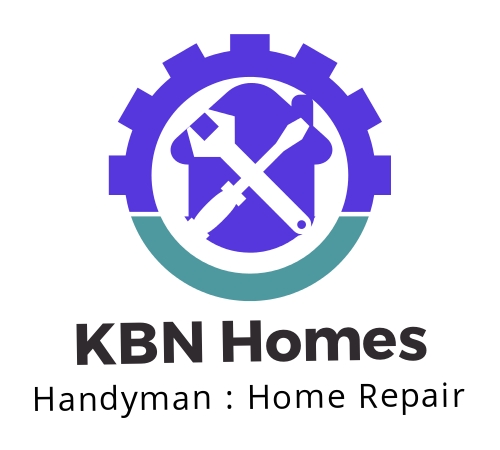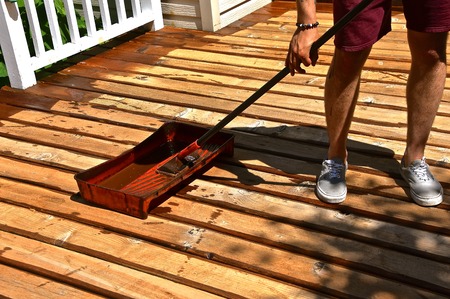Deck Staining and Repair in Naperville, IL
Do you have a wood deck that is new or weathered and needs to be repaired, sealed, stained, or painted? There are many options for finishing or protecting your wood deck. Keeping the lumber properly protected will save money on costly repairs in the future. I have had many customers ask about the process and options to treat their deck. While many companies will take shortcuts or use low-cost material to save costs, the process below will provide for a lasting quality finish that most homeowners are looking for.
Step 1 – Diagnose damaged areas for repair
Although lumber makes for a great building material, it will degrade quickly if left exposed in the elements. Most exterior lumber is pressure treated to protect the natural grain from insects and weathering while exposed outdoors. Although pressure treated lumber will degrade slower than non-treated, if left exposed unprotected it will crack and rot over time. Note that I am talking about lumber intended to be used in decking or other residential areas, not telephone poles or other chemically treated lumber not intended to be used in building.
Typically, the portions of exterior decks that will degrade the fastest are buried portions that retain moisture longer than those exposed to open air, ends of cut lumber that will wick moisture into the wood, and cracked decking that will retain dirt and moisture. Any portions of the deck that are rotting, severely cracked or warped, or have other damage should be replaced to allow for proper adhesion and functioning of the stain or paint to be applied.
Step 2 – Clean and Brighten
Over time decks gather dirt in cracks and surface imperfections, grow milder in areas that are often exposed to moisture, and grey due to the natural weathering process. Surface dirt and mildew will act as a barrier between the stain or paint and prohibit adhesion. This will cause the products to peel and fail much faster than if applied to a clean dry surface. Most common deck cleaners are basically bleach water with surfactants that aid in removal of surface dirt. The products are typically sprayed on and rinsed off. Although many advertise that scrubbing is not required, difficult areas usually need to be scrubbed to eliminate the dirt and mildew.
The brighteners used in deck cleaners will bring back the natural tone of the wood, eliminating the greying weathered look. This is especially important if the deck will be sealed/stained with a transparent or semi-transparent product that will allow for some of the wood grain to show through. The brighteners will allow for a more uniform color that matches the manufacturers intended tone.
I have found that the best way to achieve a clean, ready to stain finish is to rinse the deck wash product with a pressure washer. The nozzle and amount of pressure used to rinse the deck will depend on the overall heath of the lumber. A more weathered, cracked deck will be damaged by pressurized water much quicker than a new deck. Many companies that advertise deck staining and repair services will either only pressure wash, or only spray and rinse with a deck cleaner. Although this saves them time and money, the overall product will not hold up or last as long as it would if the lumber was properly cleaned.
Step 3 – Select a stain or paint
There are many products that will advertise they are the best, last longest, Final material selection should be made based on the condition of the deck, weather it was previously treated or not, what the desired final look will be, and the geographical location. For example, deck staining and repair in Naperville, IL, is different than a similair project in Arizona. Typically in teh midwest, a transparent, semi-transparent, or solid product will be used. A rule of thumb on longevity is the more pigment a stain has, the longer it will last. This is reflected in product warranties with solid stains having extended or lifetime warranties.
Most stains sold are also sealers. A true sealer is usually only used if the end result is only protection of the lumber, not addition of any pigment. Some products sold are intended to be used on extremely weathered wood that will not allow for more standard paints and stains. These products, such as Cabot Deck Correct, are much thicker than standard stains, are typically solid in color, and will fill in cracks and voids in the lumber. Although there were some bad products launched when this like of material was originally sold, they seem to have been improved over the years and are the only products that can be applied on some decks without major repairs.
Step 4 – Apply
Application of the stain or paint can only be completed once the lumber is completely dry after cleaning. Moisture in the wood will prohibit adhesion, causing the product to fail. For this reason, when planning your deck staining and repair, it is best to try for a time when a nice stretch of weather is in the forecast. Although not typically noted on product labels or other material information, high humidity will cause a much longer dry time. The dewpoint can also be an issue when starting work. If the dewpoint is within 5 degrees of the air tempurature, it is best to wait for the temperature to increase. Usually this is an issue if a large project is started too early in the morning when dew may accumulate and coat surfaces with a thin layer of moisture.
Materials can be applied via roller, brush, or stain pad depending on the condition of the deck, layout of the deck, and type of material selected. Typically, a material that can be applied with a roller will be much faster than one that is best applied with a brush. Some materials are also only recommended on horizontal surfaces. If this is the case, a different material with a matching color can be selected for any vertical surfaces. Dry times will vary, but usually decks can take light traffic after 24 hours and heavier traffic such as grills or furniture after 3 days.
Other Considerations
I have been called to many projects in Naperville, IL, to correct deck treatments that failed due to the steps above not being followed. Some have failed as soon as 2 months after applied. Although it is more costly to take the time to properly clean, apply 2 coats if needed, and use quality products, the end result will last much longer than taking a shortcut.

